Last year I asked a friend if she’d collaborate with me on a novel, and she didn’t say YES right away. She tilted her head and thought for a moment, clearly trying not to frown. “I don’t know what this collaboration would look like,” she said, and I said, “Me, neither! We’ll have to make it up as we go along.” Now three months and three chapters into the story, we’re making up lots of stuff. This is the fun stage.
But what if we disagree over the way the story should progress? What happens when we have to revise? I started wondering how others have made collaborations work.
 And that led me to co-authors Cordelia Jensen and Laurie Morrison. Their novel, Every Shiny Thing, came out from Amulet Books earlier this year. It’s a great read—heartwarming and authentic—and I asked them to share some Do’s and Don’ts and tips about collaborating. They said, “Sure!”
And that led me to co-authors Cordelia Jensen and Laurie Morrison. Their novel, Every Shiny Thing, came out from Amulet Books earlier this year. It’s a great read—heartwarming and authentic—and I asked them to share some Do’s and Don’ts and tips about collaborating. They said, “Sure!”
But before we get to the interview, hey, I’m giving away one copy of Every Shiny Thing! Hop to the end of this post. to enter the giveaway, and come back for the interview. Deadline to enter: Tuesday, Sept. 18, 11:59 PM.
A. B. Westrick: Welcome to my blog, Cordelia and Laurie!
Cordelia Jensen & Laurie Morrison: Thanks for inviting us!
ABW: I want to pick your brains about writing Every Shiny Thing. Help me out! I hope my colleague and I can craft a novel as engaging as yours.
Let’s start with your process. You’ve told the story in alternating points of view, and I know from other interviews that Cordelia wrote Sierra’s chapters and Laurie drafted Lauren’s. Did you ever deviate from that set-up? Did you edit each other’s drafts, and if so, how did that go? If one of you read something in the other’s writing that didn’t sit right with you, did you phone? Email? Text? Make a comment in the margin of your shared Google doc?
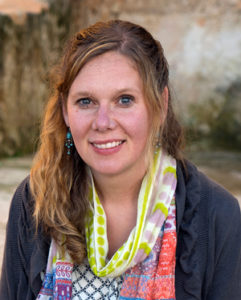
CJ & LM: We gave a lot of immediate feedback on each other’s chapters as we went. We mostly made comments in the Google Doc we were using, both about things we loved and suggestions and questions we had. We also emailed, texted, and occasionally talked by phone or in person to plan where the story was going and strategize about revisions. We sometimes used the “suggesting” feature to suggest changes in each other’s sections, mostly for line-level stuff, but the person who had written the section had the final say about whether or not to accept the suggestions.
That went really well for us! We both loved getting immediate thoughts from the other person and having someone to problem-solve with… and we also liked feeling like we got the final word within our own sections.
ABW: Okay, so you had a healthy back-and-forth along with a sense of ownership of your sections. I like that. I imagine that some point along the way, you must have had a disagreement over something, and I’d love for you to give a specific example of a plot twist or character development point on which you didn’t see eye to eye. Then tell us how you proceeded with revision.
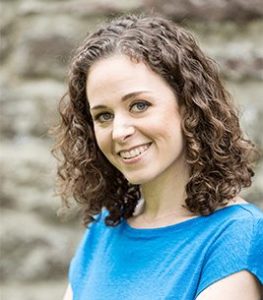
CJ & LM: Working on Every Shiny Thing was sort of a magical process for us. We know it sounds hard to believe, but somehow we really didn’t have disagreements about the writing or revision process. We think that’s because we each were the authorities on our own characters, but we shared the same overall vision for the characters, their friendship, and the overall arc and themes of the novel. It seemed to work really well that we knew generally where the story was going but had enough room to improvise and that we have different strengths (Laurie is very detail-oriented and Cordelia is a big-picture thinker). Before we started the book, we knew and appreciated each other’s strengths, so Laurie was happy to accept Cordelia’s big-picture thoughts and Cordelia was happy to let Laurie be nitpicky. 🙂
ABW: The shared vision sounds crucial. Were there any tough times? And stress-producing moments for the two of you?
CJ & LM: The months leading up to publication were a little bit more challenging because we occasionally fueled each other’s anxiety about things we couldn’t control. We had to have an open conversation about what aspects of getting ready to launch the book were stressing each of us out, how best to support each other through that part of the process, and if there were some topics that were better for us to talk about with other people than each other. It worked out well for us to divide up some of the marketing we were each more comfortable with so we each had our own jobs.
ABW: So really good communication is crucial. (I’m schooling myself on you. Thank you!) Ahead of time, did you write up a collaboration agreement, explicitly articulating your expectations of each other? Did you state up front how you would divide the earnings from the book? Or did you just wing it?
CJ & LM: We didn’t have any kind of official agreement, and we actually never even discussed how we would divide earnings; we always just assumed we would split everything 50/50. We can see that there could be situations in which an agreement like this would be a good idea, though. For us, we knew our friendship was our biggest priority and we trusted our ability to communicate openly if any questions or conflicts arose.
ABW: In an excellent interview at Through the Tollbooth, you mention the “revision letter” you got from your editor. Once you had that letter in hand, did one of you end up having to do more revision than the other? If so, how did that go?
CJ & LM: The amount of revision each of us had to do was about the same, but the type of revision was different. We both added short new first chapters, but then Cordelia’s tasks were largely about adding more new content; she added a whole subplot for Sierra and developed some of Sierra’s relationships. Laurie’s revisions, on the other hand, were more about changing some of the parts that were already in the manuscript, and not adding new parts. Specifically, Laurie got feedback from three sensitivity readers and did a lot of work to enrich the character of Lauren’s brother Ryan and the school Ryan attends.
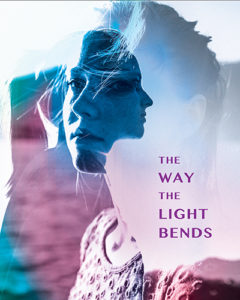 Things worked out pretty well logistically because when we got the letter, Cordelia was busy working on her other 2018 book, The Way the Light Bends, and Laurie wanted to do a lot of research before starting to make changes. So Laurie researched for a couple of weeks, then we met to make a revision plan. Then Laurie made her edits with Cordelia’s feedback, and Cordelia added her new content with Laurie’s feedback.
Things worked out pretty well logistically because when we got the letter, Cordelia was busy working on her other 2018 book, The Way the Light Bends, and Laurie wanted to do a lot of research before starting to make changes. So Laurie researched for a couple of weeks, then we met to make a revision plan. Then Laurie made her edits with Cordelia’s feedback, and Cordelia added her new content with Laurie’s feedback.
ABW: I love that you were already friends and critique partners before beginning your collaboration. What strengths did each of you see in the other that gave you confidence that you could collaborate on this novel and make it work?
LM: I think Cordelia’s writing is beautiful and am especially in awe of her use of imagery and her ability to come up with intriguing and emotional ideas. I was already learning from her about how to use images and metaphors to deepen my own writing, and I loved the idea of learning more from those strengths. I knew she would push me to write something more emotional and lyrical than what I would be able to do on my own. We also already helped each other brainstorm story elements for our own projects, so I loved the idea that we could brainstorm and problem solve a story together.
CJ: I have learned a lot from Laurie’s writing. First, she is so good at locating emotion inside the physical body which I have a lot of trouble doing. I think because I am alway making these abstract imagery connections between emotion and something outside the body. (Incidentally, Laurie has also increased my use of italics.) I also sometimes tell instead of show especially in first drafts and Laurie reminds me to show! Also, Laurie is the detail queen. She is fantastic at coming up with these really specific details about a character’s life story and reading her work has helped me look at the details in my own scenes and try to make them more vivid.
ABW: Do either of you think you could have written this novel without having done this collaboration? I mean, I get that the story would be different if you weren’t partners, but with this question I’m really asking: why collaborate? Why not go it alone? How/why might a writer benefit from entering into a collaboration?
CJ & LM: We had the idea to write together before we created the plot for Every Shiny Thing. So, our first priority was to collaborate and then to see what came from that collaboration. We had a really fun working relationship and we were good at helping each other brainstorm ideas and give each other feedback before we made the choice to write together. Because of this, we thought the process would be energizing. And it was! In terms of the benefits, the process helped us both become better writers because we challenged each other and encouraged each other so consistently. It also expanded our creative minds, since we both have our own style.
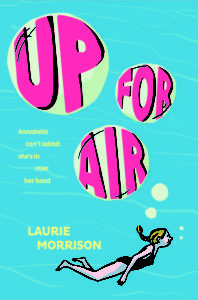 ABW: That’s great. And we get to see your different styles in the books each has written independently. In addition to Cordelia’s The Way the Light Bends and other novels, I see that Laurie has a new book coming out in May 2019: Up for Air. It looks great!
ABW: That’s great. And we get to see your different styles in the books each has written independently. In addition to Cordelia’s The Way the Light Bends and other novels, I see that Laurie has a new book coming out in May 2019: Up for Air. It looks great!
Okay, one more question on our original topic here: what Do’s and Don’ts would you suggest for writers who are considering a collaboration?
CJ & LM: DO go into the process thinking of each others as equals who can learn from one another.
DO have a plan in terms of how you are going to logistically write the story together.
DO go into it understanding there may be conflict and you might have to be more flexible than you would be if you were writing solo. We think it would be a lot harder to collaborate without a solid foundation of trust and open communication.
If you don’t know the person that well outside of the collaboration, we DO suggest doing social activities that aren’t writing related. It is a lot of work not just to write a book together but to go through the publication journey together. It’s important to choose someone you can laugh with and commiserate with and celebrate with! So…
DON’T take yourselves too terribly seriously. At the end of the day, the only reason to collaborate is if it is fun and energizing. If it starts being more conflicted than joyful maybe it is is time to reevaluate your choice.
ABW: Thank you so much, Cordelia and Laurie, for telling us a bit about your writing process.
CJ & LM: Thank you for having us!
Readers who want to know more can visit the authors’ websites, Twitter and facebook feeds through the Rafflecopter giveaway below. Each visit gets you an entry toward winning your own copy of Every Shiny Thing.
Or you can visit Cordelia’s website here, and
Laurie’s website here, and
Cordelia’s twitter feed here, and
Laurie’s twitter feed here, and
Find Cordelia’s facebook author page here, and
Visit Laurie’s Instagram page here.
Good luck in the raffle! Come back later this month to find out who wins (the winner will be randomly selected by Rafflecopter).
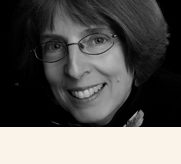
Interesting. Looks like they did well with collaboration. Picking a person you could work with would be key. Thanks..
Yes. Perhaps it’s just as much about communication and the relationship as it is about crafting a book!
Great interview! (I’ve already won recently, so no need to enter me in the drawing. I wanted to comment anyway.) I really appreciate the discussion about issues that could come up in a collaboration. I’m glad to see how Cordelia and Laurie worked things out as they progressed in their book.
L. Marie — I loved your interview with Cordelia and Laurie at Through the Tollbooth. (I tried to ask questions that were different from yours!)
Great interview! I’m collaborating with another author now on a chapter book series, and our agents made us sign collaboration agreements. It can be complicated when there are two agents involved.
I’ve looked into this and found people generally saying that collaboration agreements are a good thing. Cordelia and Laurie’s arrangement sounds like the exception to the norm.